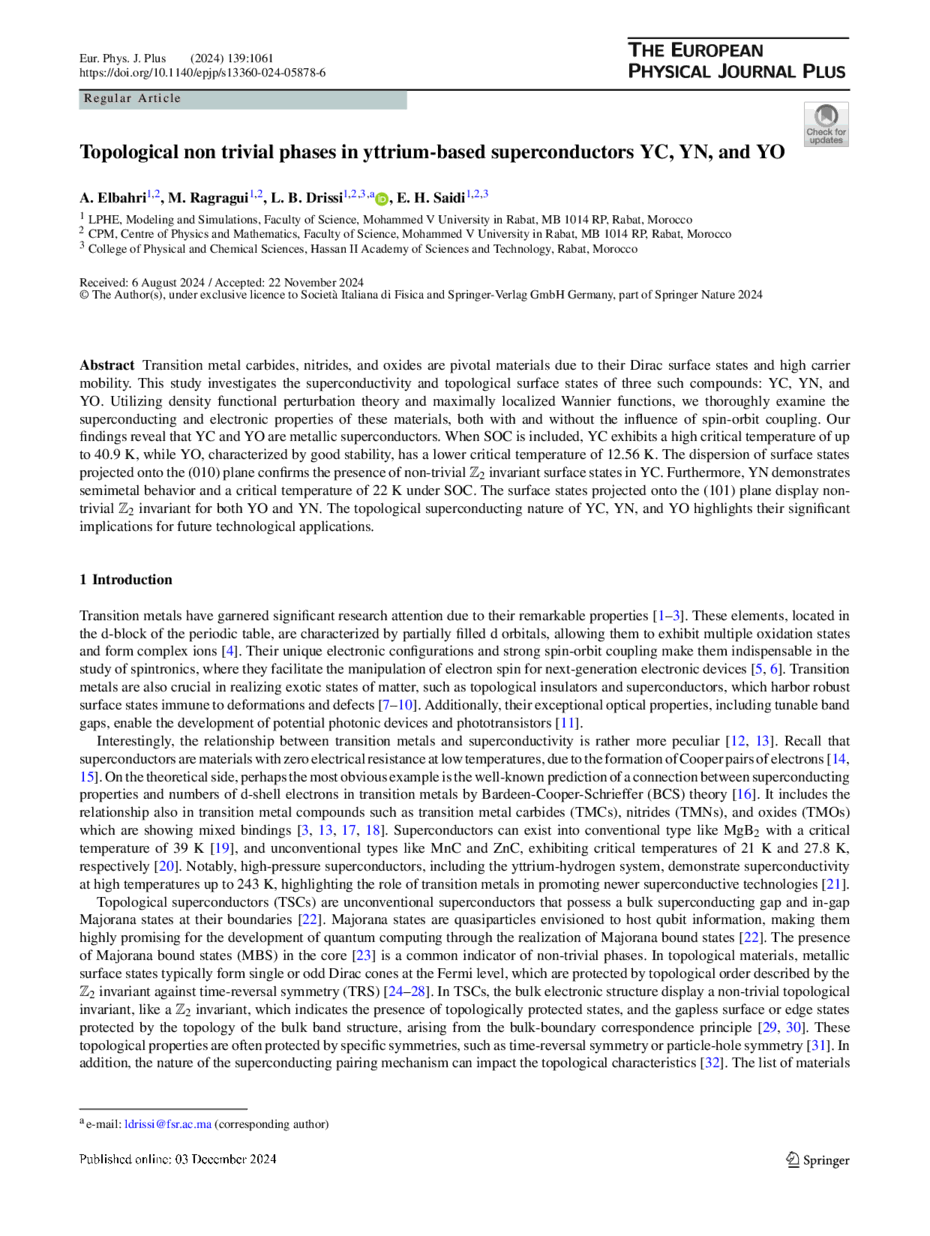https://doi.org/10.1140/epjp/s13360-024-05878-6
Regular Article
Topological non trivial phases in yttrium-based superconductors YC, YN, and YO
1
LPHE, Modeling and Simulations, Faculty of Science, Mohammed V University in Rabat, MB 1014 RP, Rabat, Morocco
2
CPM, Centre of Physics and Mathematics, Faculty of Science, Mohammed V University in Rabat, MB 1014 RP, Rabat, Morocco
3
College of Physical and Chemical Sciences, Hassan II Academy of Sciences and Technology, Rabat, Morocco
Received:
6
August
2024
Accepted:
22
November
2024
Published online:
3
December
2024
Transition metal carbides, nitrides, and oxides are pivotal materials due to their Dirac surface states and high carrier mobility. This study investigates the superconductivity and topological surface states of three such compounds: YC, YN, and YO. Utilizing density functional perturbation theory and maximally localized Wannier functions, we thoroughly examine the superconducting and electronic properties of these materials, both with and without the influence of spin-orbit coupling. Our findings reveal that YC and YO are metallic superconductors. When SOC is included, YC exhibits a high critical temperature of up to 40.9 K, while YO, characterized by good stability, has a lower critical temperature of 12.56 K. The dispersion of surface states projected onto the (010) plane confirms the presence of non-trivial  invariant surface states in YC. Furthermore, YN demonstrates semimetal behavior and a critical temperature of 22 K under SOC. The surface states projected onto the (101) plane display non-trivial
invariant surface states in YC. Furthermore, YN demonstrates semimetal behavior and a critical temperature of 22 K under SOC. The surface states projected onto the (101) plane display non-trivial  invariant for both YO and YN. The topological superconducting nature of YC, YN, and YO highlights their significant implications for future technological applications.
invariant for both YO and YN. The topological superconducting nature of YC, YN, and YO highlights their significant implications for future technological applications.
Copyright comment Springer Nature or its licensor (e.g. a society or other partner) holds exclusive rights to this article under a publishing agreement with the author(s) or other rightsholder(s); author self-archiving of the accepted manuscript version of this article is solely governed by the terms of such publishing agreement and applicable law.
© The Author(s), under exclusive licence to Società Italiana di Fisica and Springer-Verlag GmbH Germany, part of Springer Nature 2024
Springer Nature or its licensor (e.g. a society or other partner) holds exclusive rights to this article under a publishing agreement with the author(s) or other rightsholder(s); author self-archiving of the accepted manuscript version of this article is solely governed by the terms of such publishing agreement and applicable law.





